Bookworm
Published in Book Reviews, General, Issue 6 (Nov/Dec 2011), Reviews, Volume 19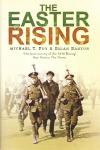 As the countdown to the centenary of the 1916 Rising continues, the presses carry on rolling with 1916-related publications,producing both new and revised editions.
As the countdown to the centenary of the 1916 Rising continues, the presses carry on rolling with 1916-related publications,producing both new and revised editions. 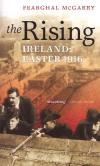 In the latter category is The Easter Rising by Michael T. Foy and Brian Barton, first published in 1999 and described at the time by Roy Foster as ‘the best survey of the 1916 Rising’, and now republished by the History Press (384pp, £16.99pb, ISBN 9780752457031). It has been fully revised, expanded and updated in the light of a wealth of new material, in particular the almost 2,000 witness statements gathered by the Bureau of Military History (BMH) from participants in the Rising, which became available to the public in March 2003. As Fearghal McGarry reports in this issue (pp 26–9), this ‘treasure trove of new sources’ will soon be available digitally. The 1916 BMH material also underpins his own ‘bottom-up’ narrative—The Rising. Ireland: Easter 1916—published last year (and reviewed in HI 18.6, Nov./Dec. 2010), now available in paperback (Oxford University Press, 365pp, £10.99pb, ISBN 9780199605972). For a sharper focus on the 1916 BMH statements themselves, readers are referred to McGarry’s Rebels: voices from the
In the latter category is The Easter Rising by Michael T. Foy and Brian Barton, first published in 1999 and described at the time by Roy Foster as ‘the best survey of the 1916 Rising’, and now republished by the History Press (384pp, £16.99pb, ISBN 9780752457031). It has been fully revised, expanded and updated in the light of a wealth of new material, in particular the almost 2,000 witness statements gathered by the Bureau of Military History (BMH) from participants in the Rising, which became available to the public in March 2003. As Fearghal McGarry reports in this issue (pp 26–9), this ‘treasure trove of new sources’ will soon be available digitally. The 1916 BMH material also underpins his own ‘bottom-up’ narrative—The Rising. Ireland: Easter 1916—published last year (and reviewed in HI 18.6, Nov./Dec. 2010), now available in paperback (Oxford University Press, 365pp, £10.99pb, ISBN 9780199605972). For a sharper focus on the 1916 BMH statements themselves, readers are referred to McGarry’s Rebels: voices from the 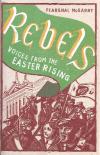 Easter Rising (Penguin Ireland, 363pp, €25/£20hb, ISBN 9781844882038), just published by Penguin Ireland. A brand-new publication that covers more than just
Easter Rising (Penguin Ireland, 363pp, €25/£20hb, ISBN 9781844882038), just published by Penguin Ireland. A brand-new publication that covers more than just 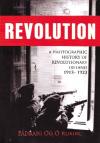 the Rising is Pádraig Óg Ó Ruairc’s Revolution: a photographic history ofrevolutionary Ireland 1913–1923 (Mercier Press, 288pp, €25hb, ISBN 9781856357524). The introduction modestly states that ‘this book is not intended to be a definitive history or complete study of the Irish struggle for independence’ but it will certainly be plundered for picture references by publishers of any such histories to come. Its 288 pages are packed with photos (albeit of varying quality, as you would expect), some familiar, some not, but all properly credited and indexed. The lengthy captions are particularly insightful, with nothing taken at face value. For example, on page 148 is a photo of two Auxies searching a captured IRA Volunteer following an IRA ambush in Kerry, which is actually a staged photograph taken on the set of a British propaganda film at Vico Road, Killiney, yet, according to the author, ‘it still makes regular appearances in modern history books’ (. . . and magazines! Yes, HI was caught out a few years back with this one—Ed.). My only quibble is that the publisher might have loosened the purse-strings and opted for
the Rising is Pádraig Óg Ó Ruairc’s Revolution: a photographic history ofrevolutionary Ireland 1913–1923 (Mercier Press, 288pp, €25hb, ISBN 9781856357524). The introduction modestly states that ‘this book is not intended to be a definitive history or complete study of the Irish struggle for independence’ but it will certainly be plundered for picture references by publishers of any such histories to come. Its 288 pages are packed with photos (albeit of varying quality, as you would expect), some familiar, some not, but all properly credited and indexed. The lengthy captions are particularly insightful, with nothing taken at face value. For example, on page 148 is a photo of two Auxies searching a captured IRA Volunteer following an IRA ambush in Kerry, which is actually a staged photograph taken on the set of a British propaganda film at Vico Road, Killiney, yet, according to the author, ‘it still makes regular appearances in modern history books’ (. . . and magazines! Yes, HI was caught out a few years back with this one—Ed.). My only quibble is that the publisher might have loosened the purse-strings and opted for 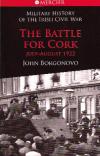 a larger format.
a larger format.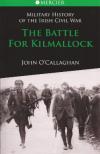 There’s no quibbling with Mercier’s excellent ongoing Military History of the Irish Civil War series (general editor Gabriel Doherty). As John O’Callaghan relates in The battle for Kilmallock (159pp, €12.99pb, ISBN 9781856356923), after the capture of Limerick by the Free State army in mid-July 1922, Republican forces retreated south and made their next stand around Kilmallock. In one of the largest and most intense battles of the Civil War, the opposing forces fought for possession of Kilmallock, Bruree and Bruff, with the latter two towns repeatedly changing hands. The eventual Free State victory was a vital turning point in the war. In The battle for Cork, July–August 1922 (160pp, €12.99, ISBN 9781856356961) John Borgonovo takes up the story. The Free State army’s next objective was Cork, capital of the ‘Munster Republic’, and this would be attacked not full-frontally but by a daring amphibious assault, starting at Passage West. Borgonovovo contends that Republicans were not taken by surprise (as is often argued)—they simply didn’t have the resources to stop it. After a three-day fight the Cork IRA were forced into a demoralising retreat.
There’s no quibbling with Mercier’s excellent ongoing Military History of the Irish Civil War series (general editor Gabriel Doherty). As John O’Callaghan relates in The battle for Kilmallock (159pp, €12.99pb, ISBN 9781856356923), after the capture of Limerick by the Free State army in mid-July 1922, Republican forces retreated south and made their next stand around Kilmallock. In one of the largest and most intense battles of the Civil War, the opposing forces fought for possession of Kilmallock, Bruree and Bruff, with the latter two towns repeatedly changing hands. The eventual Free State victory was a vital turning point in the war. In The battle for Cork, July–August 1922 (160pp, €12.99, ISBN 9781856356961) John Borgonovo takes up the story. The Free State army’s next objective was Cork, capital of the ‘Munster Republic’, and this would be attacked not full-frontally but by a daring amphibious assault, starting at Passage West. Borgonovovo contends that Republicans were not taken by surprise (as is often argued)—they simply didn’t have the resources to stop it. After a three-day fight the Cork IRA were forced into a demoralising retreat.
















